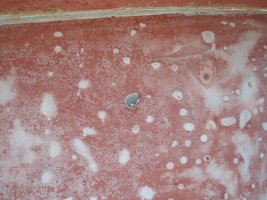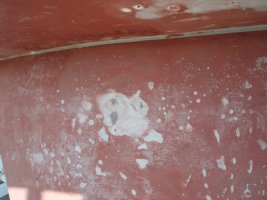westcoastcat
Member II
Loren thanks for the reply, so from your comment I take it you're saying the lack of a ground cable will not cause the blistering?
The keel is lead and it appears that pockets / blisters dime to quarter size have appeared on the keel and the vicinity of the keel on the hull.
The surveyor(s) two have surveyed the boat can not come up with any type of agreement, they both say on one hand it could be this on the other hand it could be that, I think the next surveyor I talk to should have less hands ( thanks Harry Truman ).
The keel is lead and it appears that pockets / blisters dime to quarter size have appeared on the keel and the vicinity of the keel on the hull.
The surveyor(s) two have surveyed the boat can not come up with any type of agreement, they both say on one hand it could be this on the other hand it could be that, I think the next surveyor I talk to should have less hands ( thanks Harry Truman ).



